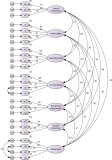
Vol.11 No.4
Abstract
Being one of the first and hardest hit countries by the coronavirus, Iran still continues to preserve its place among nations with the highest rates of infection and COVID-19 related deaths. While on the surface, such worrying status evinces the failure of the authorities in handling the crisis, at deeper levels, it points to the fundamentalist nature of the government and political system of the country. In this view, the current devastating condition in Iran is a clear indication of the all-out influence of the Islamic regime’s ideologies on officials’ decision-making and their political agendas throughout the pandemic. Accordingly, the staterun mainstream media, as the most preeminent institution of power, have been incessantly engaged in disseminating a series of ideology-laden information around the issues concerning the coronavirus, and in line with the developing political discourses during pandemic. Far from being based on factual accounts or scientific facts, these disseminated messages inevitably grew into a source of disinformation, ultimately resulting in overall public confusion and skepticism. Through examining the data gathered from some of the most prominent online news agencies run by the government, this study identifies five major discursive trends through which the mainstream media propagated ambiguous and manipulative information about COVID-19. These findings are then explained in the light of media system dependency theory, leading to the argument that within autocratic nation-states, public reliance on media during a national/global crisis brings about new opportunities for state exploitation, and further distressing consequences for the people.

Abstract
Cybercrime is a significant threat to Internet users, involving crimes committed using computers or computer networks. The landscape of cyberspace presents a complex terrain, making the task of tracing the origins of sensitive data a formidable and often elusive endeavor. However, tracing the source of sensitive data in online cyberspace is critically challenging, and detecting cyber-criminals on the other hand remains a time-consuming process, especially in social networks. Cyber-criminals target individuals for financial gain or to cause harm to their assets, resulting in the loss or theft of millions of user data over the past few decades. Forensic professionals play a vital role in conducting successful investigations and acquiring legally acceptable evidence admissible in court proceedings using modern techniques. This study aims to provide an overview of forensic investigation methods for extracting digital evidence from computer systems and mobile devices to combat persistent cybercrime. It also discusses current cybercrime issues and mitigation procedures.

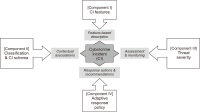


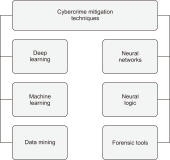
Abstract
Research in interdisciplinary fields like biomechanics is published in a variety of journals whose visibility depends on bibliometric indexing that is often driven by citation analysis of bibliometric databases. This study documented variation in publication metrics and research subject categories assigned to 14 biomechanics journals. Authors, citation, and citation rate (CR) were collected for the top 15 cited articles in the journals retrieved from the Google Scholar service. Research subject categories were also extracted for journals from three databases (Dimensions, Journal Citation Reports, and Scopus). Despite the focus on biomechanics for the journals studied, these biomechanics journals have widely varying CR and subject categories assigned to them. There were significant (p=0.001) and meaningful (77-108%) differences in median CR between average, low, and high CR groups of these biomechanics journals. Since CR are primary data used to calculate most journal metrics and there is no one biomechanics subject category, field normalization for journal citation metrics in biomechanics is difficult. Care must be taken to accurately interpret most citation metrics of biomechanics journals as biased proxies of general usage of research, given a specific database, time frame, and area of biomechanics research.
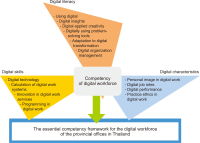
Abstract
This study aimed to study its required performance requirements and proposes a competency framework necessary for the digital workforce of the Provincial Offices in Thailand. The specific primary informants were determined as 17 people. The collecting process was performed using the Delphi technique and the electronic Delphi technique in two phases, totaling four rounds. In the first time, a structured interview was used to conduct online interviews for 15 people. Content validation was performed to determine issues of the competency framework essential for the digital workforce with 7-level scaled questionnaires, and then online reviews were collected between 10-15 people (2nd to 4th times). A consensus was found and confirmed four times with descriptive statistics, namely frequency, mean, standard deviation, mode, median, and the absolute value of the difference between mode and median, interquartile range, and application of the conceptual framework. The research findings revealed that the essential competency requirements for the digital workforce were covered in digital literacy (six aspects), digital skills (four aspects), and digital characteristics (four aspects). Consensus was confirmed for 84 issues. Therefore, it was concluded that 61 points for building an essential competency framework for the digital workforce made them effective in using digital technology as a labor-saving instrument, as well as for expanding the breadth of development of digital expertise to include members of the organization’s digital practitioner network. This development will benefit government agencies and the private sector, both national and international, in the future.



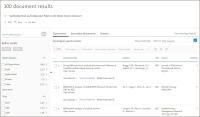
Abstract
Receiving 100 citations from indexed journals is not a common occurrence, although it does happen very rarely, and it is even more uncommon for a non-indexed article. Given this, the purpose of this present study is to perform a bibliometric analysis of 100 cited Scopus articles to a non-Scopus indexed article, using a case study of the article titled “Authorship trends and collaboration pattern in the marine sciences literature: A scientometric study” which was published by Elango and Rajendran in the International Journal of Information Dissemination and Technology in 2012. On October 15, 2022, the Scopus database was searched with the article title in the references field, and the resulting bibliographic data was exported as a comma-separated values file. The tools utilized for this analysis were ScientoPy, the Bibliometrix R Package, and VOSviewer. Based on the findings, most of the cited articles were published within the last three years, and international researchers have given more recognition compared to Indian researchers. The most popular topics were found to be bibliometrics, bibliometric analysis, and bibliometrix. The fact that all 100 cited articles were published across various subject disciplines used by Scopus to categorise sources demonstrates how well-established the citing article is within the scientific community.

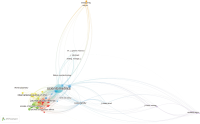
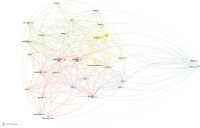

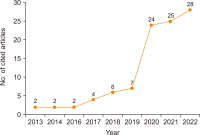







Abstract
The purpose of this study is to investigate how uses and gratifications motivations increase social media stickiness, with a special focus on media engagement as a key mediator. Data were gathered via a survey questionnaire from Bangladeshi Z Generation social media users, which was quantitative in nature. For the analysis of 258 survey samples, structural equation modeling methodology was used. The results show that social media engagement and social media stickiness are positively impacted by uses and gratifications motivations such as social interaction, information, convenience, and entertainment. The study also found evidence of a relationship between uses and gratification motivations and social media stickiness, which is also mediated by emotional attachment. Understanding the motivations and gratifications sought by Z Generation users on social media platforms can help design strategies to enhance engagement and loyalty, ultimately leading to improved user retention and platform success. By identifying and addressing the specific needs and desires of the Z Generation, social media platforms can tailor their features, content, and user experiences to foster a stronger sense of connection and satisfaction, resulting in increased user engagement and prolonged usage.

